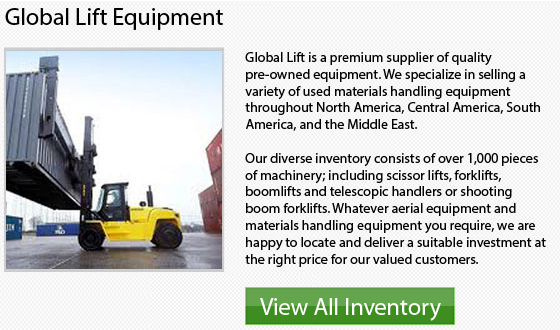
Below are add-ons which are very useful for narrow aisle lift trucks:
Side shift: The side shift option permits the lateral movement of the load without having to move the truck. This allows loads to be precisely placed.
Tilt mast: The optional tilt mast allows the forks to shift both forwards and backwards. This is perfect in cases where loads aren't completely level. To gain more stability while transporting a truck which is loaded, the mast can be tilted back.
Extendable forks: Extendable forks help the reach of a forklift to allow for the stacking of pallets one in front of the other. This is known as double deep loading.
Operator platforms: Several NA lift trucks have operator platforms which could raise and lower the operator while at the same time lowering and raising the lift truck's forks. This provides utmost visibility and control while dealing with loads at heights of 6 m to 9 m.
Forklift on a Ramp
Drivers have to be correctly taught and should be assessed and certified. It is essential for anybody using a forklift to be knowledgeable regarding safety problems and guidelines. Drivers should know how to make adjustments in cases where the load weight alters the center of gravity or on uneven surfaces. Safety rules cover the safe use of a lift truck on a ramp, that is a frequent happening since the driver will typically have to drive down and up ramps to unload and load containers.
Guidelines for Operating a Lift Truck on a Ramp
1 Drive slowly while approaching a ramp and while driving up and down the ramp. The risk of mishaps is higher while driving fast because this can upset the machine's center of gravity.
2 While not carrying a load, drive the forklift in reverse when moving up an incline on a ramp.
3 Drive forward when moving down an incline on the ramp with no load.
4 Tilt the forks slightly back to shift the center of the load to the equipment's front, while moving up or down a ramp when carrying a load.
5 Drive forward up a ramp while carrying a load to make the load more stable.